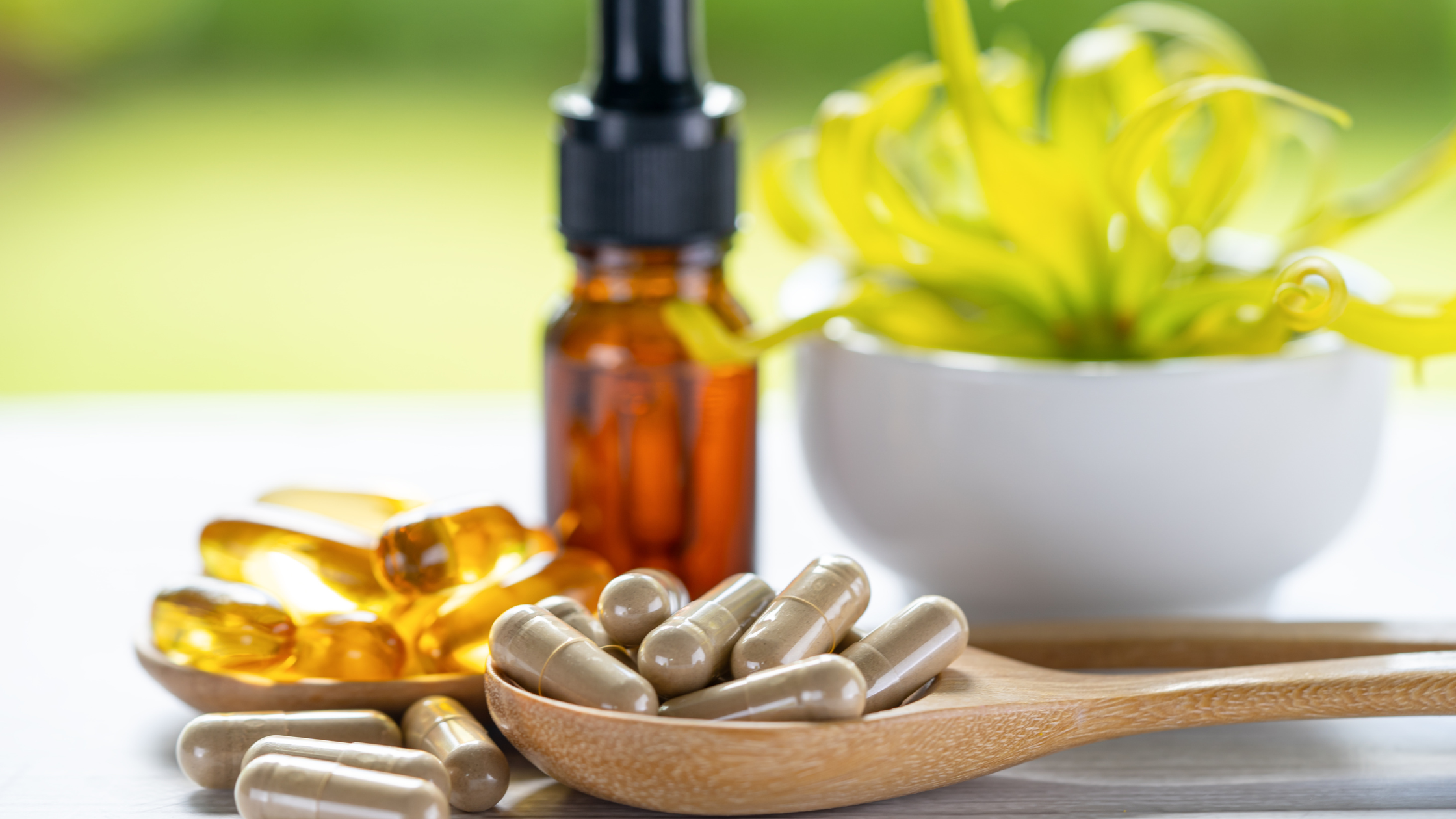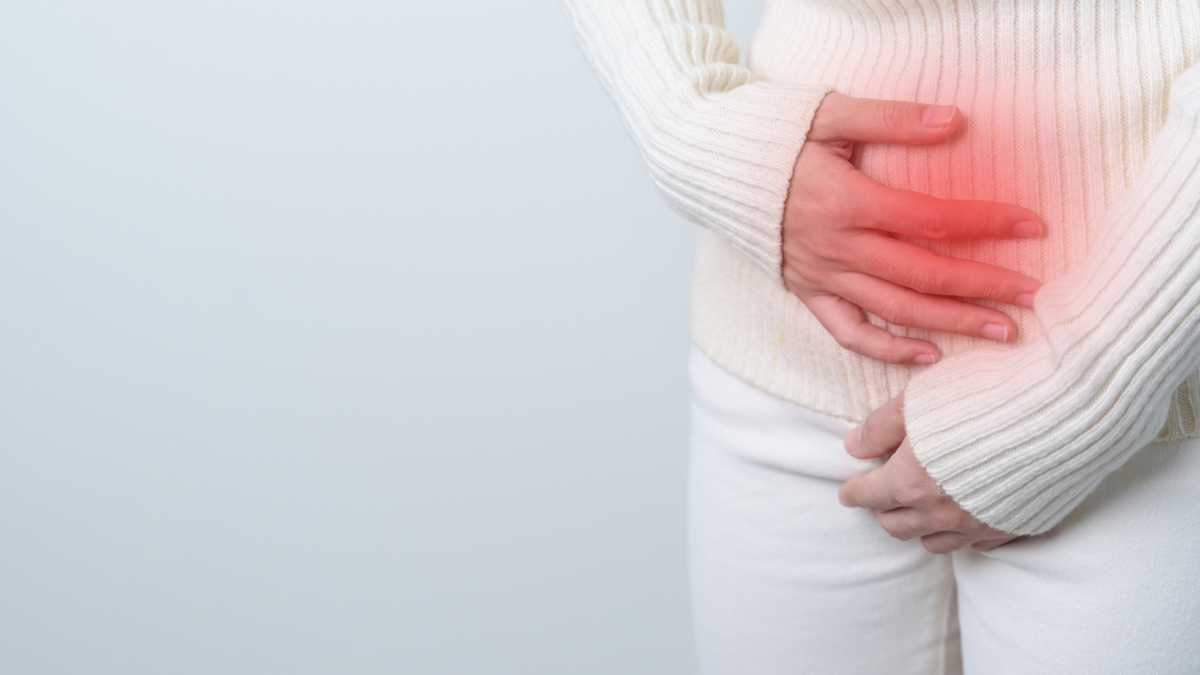


Medically Reviewed By Margaret Etudo. Written By The Vitamins For Woman Team.
Leaking, urgency, and nighttime bathroom trips can sneak in with menopause.

Menopause marks a significant transition in a woman’s life, bringing many physical and emotional changes.
While hot flashes and mood swings are commonly discussed, many women face another challenging and often embarrassing symptom: bladder issues.
Problems like frequent urination, sudden urges to pee, and urinary leakage become more common during and after menopause, affecting daily activities and overall quality of life.
These bladder troubles are closely tied to hormonal changes, particularly the decline in estrogen, which is crucial in maintaining the strength and health of the urinary tract tissues.
This blog will dive deep into the connection between hormones and bladder control, explore the types of incontinence that women commonly experience during menopause, and share proven strategies that can help improve bladder function and reduce discomfort.
Hormone levels are closely linked to bladder health, with declining estrogen contributing to urinary problems and specific symptoms to watch for.
Estrogen is vital in maintaining the strength and elasticity of tissues in the pelvic region, including the bladder and urethra.
As estrogen levels fall during perimenopause and postmenopause, these tissues become thinner, drier, and less resilient.
The muscles that control urine flow can also weaken, making it harder to hold urine in or empty the bladder.
This estrogen decline affects bladder tone and reduces blood flow, weakening the urinary tract’s natural defences.
The result is a bladder that becomes more sensitive and unpredictable, leading to symptoms such as urgency, frequency, leaking, or even painful urination.
Menopause urinary incontinence typically manifests in two primary forms: stress incontinence and urge incontinence.
Stress incontinence occurs when physical pressure on the bladder, such as coughing, sneezing, laughing, or exercising, causes urine leakage.
This happens because the pelvic floor muscles and urethral sphincter weaken, making it difficult to hold urine during sudden abdominal pressure.
Urge incontinence, on the other hand, is characterized by a sudden, intense urge to urinate followed by involuntary leakage.
It’s caused by an overactive bladder muscle that contracts unexpectedly, often triggered by certain stimuli or without apparent reason. Hormonal changes and bladder irritation can contribute to this type.
Many women experience a combination of both, which can complicate diagnosis and treatment.
Here are practical and medically supported strategies to help you manage and improve bladder control during menopause.
Pelvic floor exercises, Kegels, are the frontline defence against menopause-related bladder weakness.
These exercises strengthen the muscles that support the bladder and urethra, improving control over urination and reducing leakage.
To do Kegels correctly, you should identify your pelvic floor muscles (the ones you use to stop urine midstream), contract them for 5 to 10 seconds, and then relax simultaneously.
Repeat this 10 to 15 times per session, three times a day. Consistency is key, and benefits can start to show after a few weeks.
Pelvic floor exercises are safe, non-invasive, and recommended by many urologists and gynaecologists as a primary treatment for mild to moderate urinary incontinence.
Topical estrogen creams are often prescribed to address the estrogen deficiency directly affecting the urinary tract tissues.
Unlike systemic hormone replacement therapy (HRT), these creams are applied locally around the vaginal and urethral area, helping to restore tissue thickness and elasticity, reduce irritation, and improve bladder function.
Studies show that topical estrogen can significantly reduce symptoms like urgency, frequency, and bladder discomfort without the systemic side effects associated with oral hormone therapy.
Women interested in this treatment should consult their healthcare provider to determine the correct formulation and dosage.
Excess body weight puts additional pressure on the bladder and pelvic muscles, worsening bladder weakness after menopause.
Losing even a small percentage of body weight can alleviate this pressure and reduce symptoms of stress incontinence.
Incorporating a balanced diet and regular physical activity supports bladder health and benefits menopausal symptom management.
While staying hydrated is essential, certain drinks can irritate the bladder and exacerbate symptoms.
These include caffeine (found in coffee, tea, and many sodas), alcohol, and acidic beverages like citrus juices.
Limiting or avoiding these irritants can help decrease the frequent urination menopause sufferers experience and reduce bladder urgency.
Drinking plenty of water, spread evenly throughout the day, supports bladder health without causing overload.
Bladder training involves learning to delay urination after feeling the urge. This method helps to increase the bladder’s capacity and reduce the frequency of trips to the bathroom.
By gradually extending the time between bathroom visits, women can retrain their bladder to hold more urine comfortably.
This technique, combined with pelvic floor exercises, has proven effective for urge incontinence.
For many women, managing symptoms day-to-day means using specially designed products such as absorbent pads or underwear. These products are discreet and comfortable and help maintain hygiene and confidence.
Choosing the right product depends on the severity of leakage and personal preference, and many brands now offer menopause-specific solutions focusing on comfort and odour control.
Systemic HRT can help some women by restoring estrogen levels throughout the body, including the urinary tract. This can improve symptoms of menopause urinary incontinence, but it comes with potential risks and side effects.
Discussing the benefits and risks of HRT with a healthcare professional is essential to determine if this treatment is appropriate for you, especially if you are also experiencing other menopausal symptoms like hot flashes or night sweats.
If you are experiencing urinary symptoms more than twice a week or if they interfere with daily activities, it’s time to consult a healthcare provider. See a doctor if:
Early intervention can prevent worsening symptoms and improve quality of life.
Yes. Declining estrogen weakens the muscles and tissues supporting the bladder and urethra, leading to leakage during physical activity or sudden urges.
For some women, symptoms improve post menopause; for others, they persist unless treated. With proper management, like pelvic therapy or vaginal estrogen, symptoms can be significantly reduced.
Pelvic floor exercises, dietary changes, probiotics, and bladder training are all effective natural strategies. Vaginal estrogen is also considered safe and effective for many women.
Menopause and bladder issues can feel challenging and sometimes embarrassing, but they are familiar and manageable. Understanding the connection between hormonal changes and bladder health empowers you to take active steps towards relief.
Incorporating pelvic floor exercises, mindful fluid intake, and appropriate medical treatments can significantly improve your quality of life. Don’t hesitate to seek professional advice to find the best approach for your unique needs.

medically reviewed by margaret etudo, BPharm. written by the vitamins for woman team.